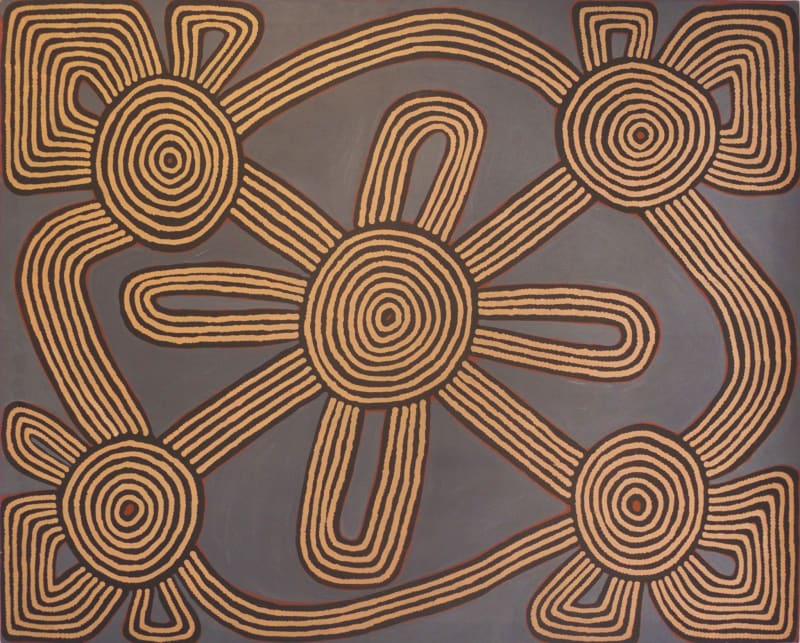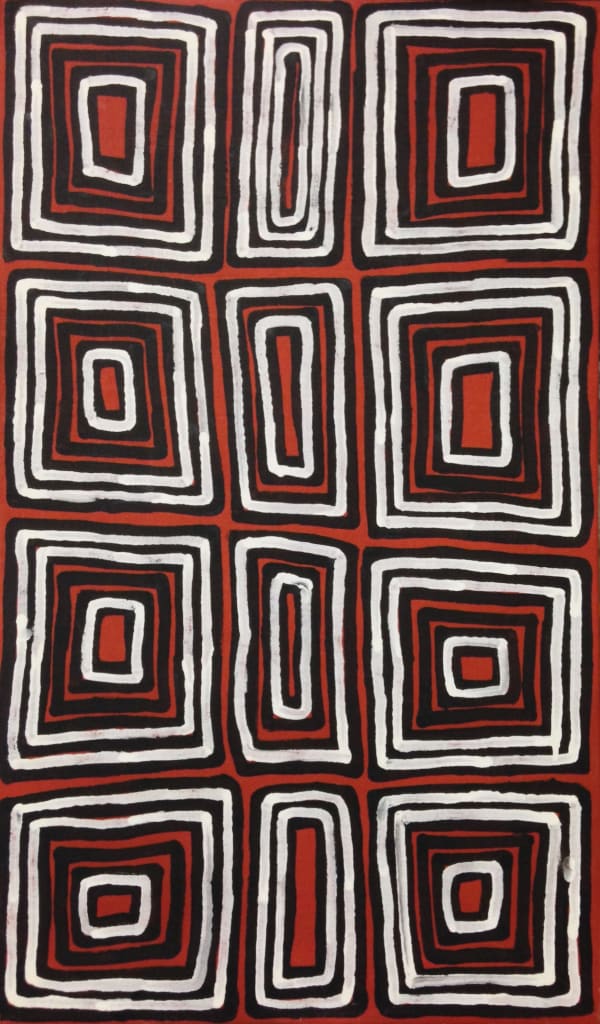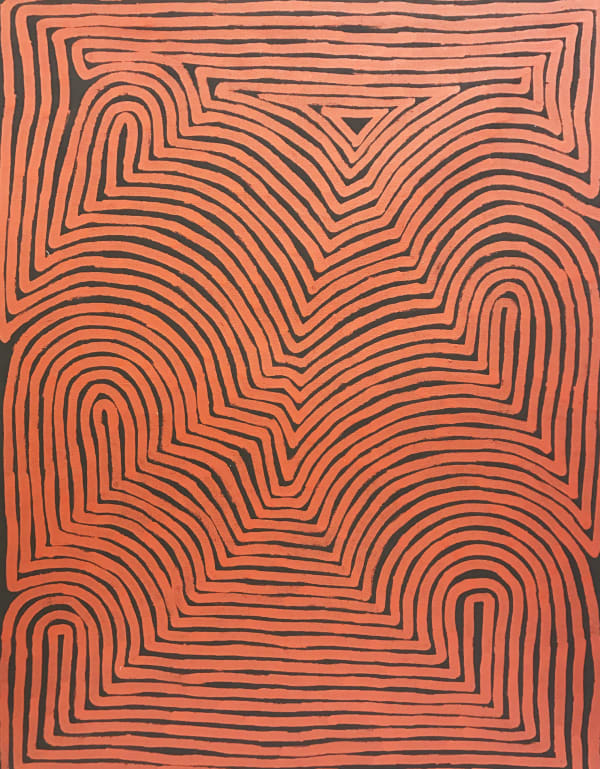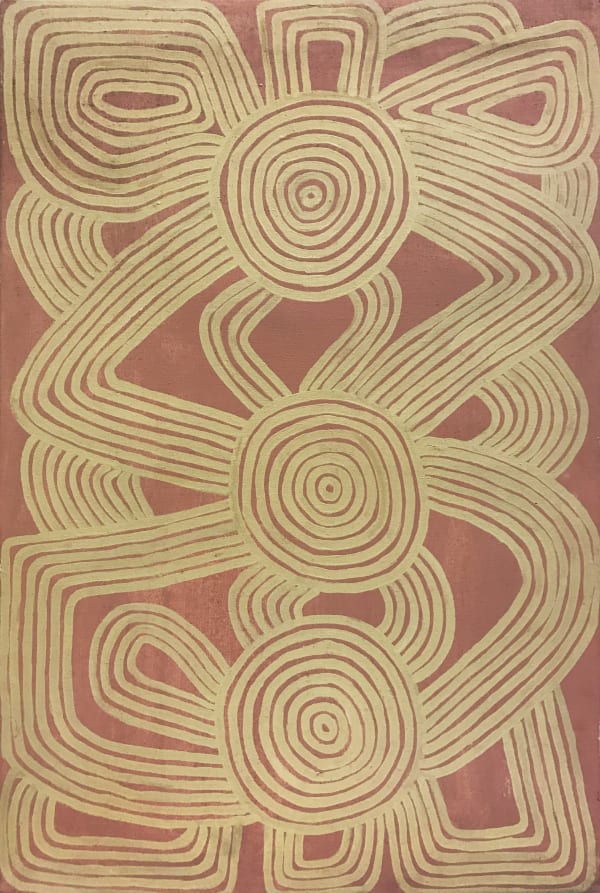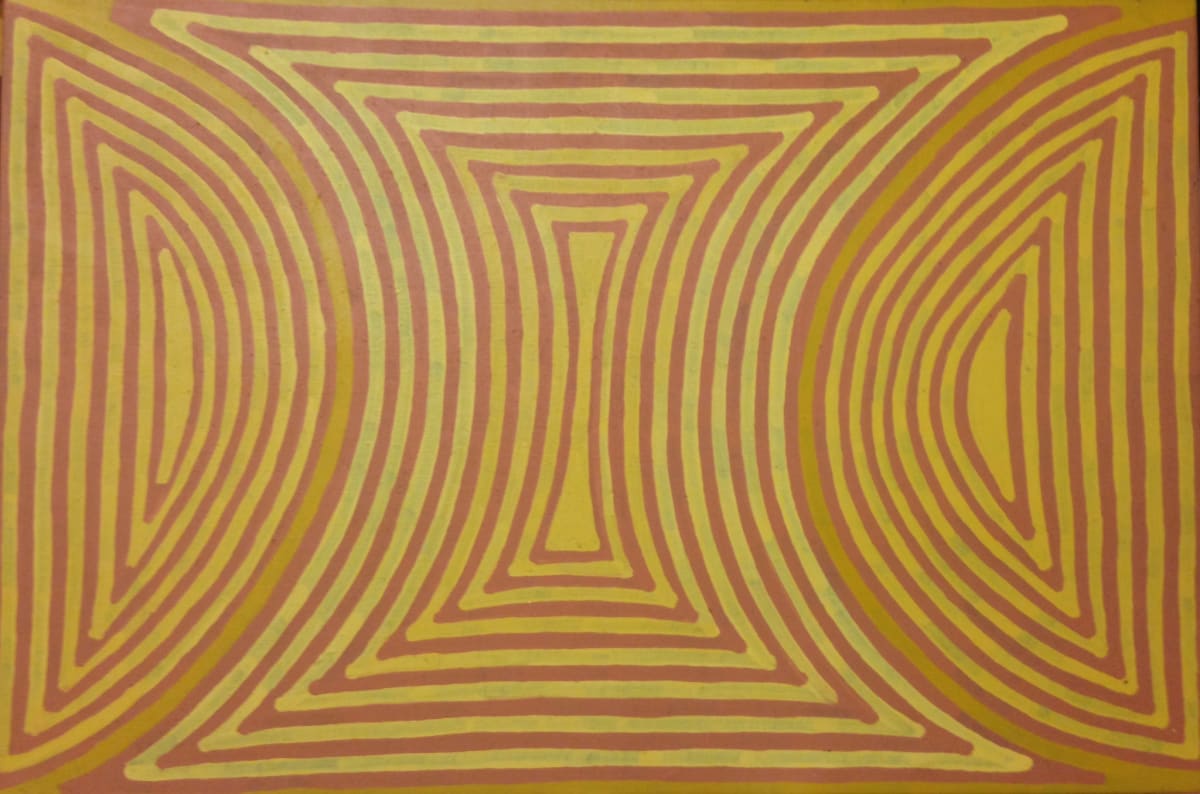Ronnie Tjampitjinpa
Overview
More than any other Western Desert artist, Ronnie Tjampitjinpa can be credited with having forged a new artist direction in embracing aesthetic minimalism in the 1990s. Ronnie Tjampitjinpa was born around 1932 in the Pintupi land at Muyinnga, about 100 kilometres west of the Kintore Range in the Northern Territory of Australia. He was one of the youngest of the group of men who began painting at the start of the Western Desert Art Movement in 1971 and was a founder of Papunya Tula Artists.
The artist’s esoteric Tingari cycles respond to the legendary Dreamtime beings of the Pintupi people. His schematised, banded compositions of concentric quadrilaterals are steeped with the knowledge of these ancestors: their travels through the desert, ritual performances, folklore and creation of the landforms at ceremonial sites. The complex and deliberately elusive meaning of his paintings is incomprehensible to the un-initiated eye, and multi-layered with spiritual importance.
Suffused with the Dreamings of his mythical Tingari ancestors, Tjampitjinpa refined the characteristics of Pintupi simplicity of design: he boldly scaled-up fundamental pictorial elements, freeing them from their iconographic reference points. Yet, the artist maintained the classic Papunya emphasis on the repetition of line and form: a distinctive hallmark of Pintupi art that connects the visual aspects to the spirit of their vast and ancient lands. His hypnotic designs explore interacting geometric shapes which evoke an eye-catching, pulsating illusion.
Ronnie Tjampitjinpa is regarded as one of Aboriginal Art's most coveted tastemakers, and is featured in over 30 significant public institution collectors, as well as being revered in private hands worldwide. He won the Alice Springs Art Prize in 1988, and had a number of solo exhibitions in Australia in the early 1990s.
Works
Exhibitions
